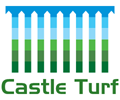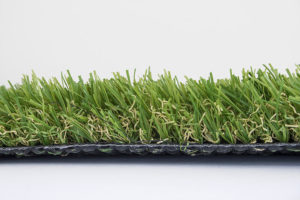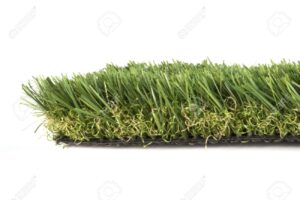In an age where sustainability is at the forefront of design and architecture, green roofs have emerged as a popular solution for mitigating environmental impact, enhancing urban biodiversity, and improving energy efficiency. However, the traditional methods of creating green roofs often come with challenges such as maintenance, irrigation, and weight constraints. Enter synthetic turf – a versatile and sustainable alternative that is revolutionizing the concept of green roofs.
The Evolution of Green Roofs
Green roofs, also known as living roofs or eco-roofs, have a rich history dating back centuries. From ancient civilizations to modern urban landscapes, the practice of covering rooftops with vegetation has been embraced for its myriad benefits. Traditionally, green roofs consisted of soil and plants layered atop waterproof membranes, providing insulation, reducing stormwater runoff, and creating habitat for wildlife.
Challenges with Traditional Green Roof Systems
While the benefits of green roofs are well-documented, their implementation can be challenging and costly. Traditional green roof systems require specialized engineering to support the weight of soil and vegetation, as well as ongoing maintenance to ensure proper irrigation, nutrient supplementation, and weed control. Additionally, the installation of traditional green roofs can be labor-intensive and time-consuming, making them less feasible for certain building types and environments.
Introducing Synthetic Turf
Castle Synthetic turf offers a sustainable and cost-effective alternative to traditional green roof systems, addressing many of the challenges associated with natural vegetation. Made from durable synthetic materials such as polyethylene or polypropylene, fake grass is lightweight, easy to install, and requires minimal maintenance. Its lifelike appearance and texture closely resemble natural grass, providing a green aesthetic without the need for soil or irrigation.
Advantages of Synthetic Turf for Green Roofs
- Weight Reduction: Unlike traditional green roofs, which require extensive soil layers to support vegetation, synthetic turf is lightweight and does not add significant load to rooftop structures. This makes it suitable for retrofitting existing buildings and structures without compromising structural integrity.
- Low Maintenance: artificial grass eliminates the need for watering, mowing, fertilizing, and pest control associated with natural grass. Once installed, it requires minimal upkeep, saving time, resources, and labor costs.
- Year-Round Greenery: Unlike natural grass, which may go dormant or require overseeding during certain seasons, synthetic turf maintains its lush green appearance year-round, providing consistent aesthetics and functionality regardless of weather conditions.
- Durability and Longevity: Artificial turf installation is highly durable and resistant to wear and tear, making it suitable for high-traffic areas such as rooftops. With proper installation and maintenance, synthetic turf can last for decades, reducing the need for frequent replacement.
- Stormwater Management: Synthetic turf helps mitigate stormwater runoff by absorbing and retaining rainwater, reducing the strain on urban drainage systems and minimizing the risk of flooding and erosion.
- Energy Efficiency: By providing additional insulation and reducing heat absorption, synthetic turf can help improve energy efficiency in buildings, lowering heating and cooling costs and mitigating the urban heat island effect.
Design Considerations for Synthetic Turf Green Roofs
When designing green roofs with synthetic turf, several factors should be taken into account to ensure optimal performance and aesthetics:
- Substrate and Drainage: Proper substrate composition and drainage systems are essential for supporting synthetic turf and managing moisture on green roofs. Lightweight growing media and efficient drainage layers can help prevent waterlogging and root rot.
- Species Selection: While synthetic turf eliminates the need for traditional plantings, incorporating native or drought-tolerant vegetation in combination with synthetic turf can enhance biodiversity, provide habitat for pollinators, and improve ecological resilience.
- Access and Maintenance: Accessibility and safety considerations should be addressed during the design phase to facilitate ongoing maintenance tasks such as debris removal, inspection, and repair of synthetic turf components.
Case Studies and Success Stories
Numerous examples around the world demonstrate the effectiveness and versatility of synthetic turf for green roofs:
- Urban Redevelopment Projects: In densely populated urban areas where green space is limited, synthetic turf green roofs have been used to create vibrant outdoor environments, promote community engagement, and improve air quality.
- Commercial and Institutional Buildings: From office complexes to educational institutions, synthetic turf green roofs have been installed on rooftops to enhance employee morale, student well-being, and brand image while reducing environmental footprint and operating costs.
- Residential Developments: Homeowners and developers are increasingly turning to synthetic turf green roofs as a sustainable landscaping solution for residential properties, providing private outdoor spaces for relaxation, recreation, and gardening.
Environmental Considerations and Future Trends
While synthetic turf offers numerous benefits for green roofs, it is essential to consider potential environmental impacts such as material sourcing, manufacturing processes, and end-of-life disposal. As the demand for sustainable building materials continues to grow, innovations in synthetic turf technology are expected to focus on recyclability, biodegradability, and renewable energy integration.
Synthetic turf represents a sustainable and versatile solution for green roofs, offering numerous benefits in terms of weight reduction, low maintenance, year-round greenery, durability, stormwater management, and energy efficiency. By combining the aesthetic appeal of natural grass with the practical advantages of synthetic materials, synthetic turf green roofs have the potential to transform urban landscapes, enhance building performance, and contribute to a more resilient and sustainable built environment. As designers, architects, and building owners seek innovative solutions to address the challenges of urbanization and climate change, synthetic turf green roofs are poised to play a significant role in shaping the cities of tomorrow.



Leave a Reply
Your email is safe with us.